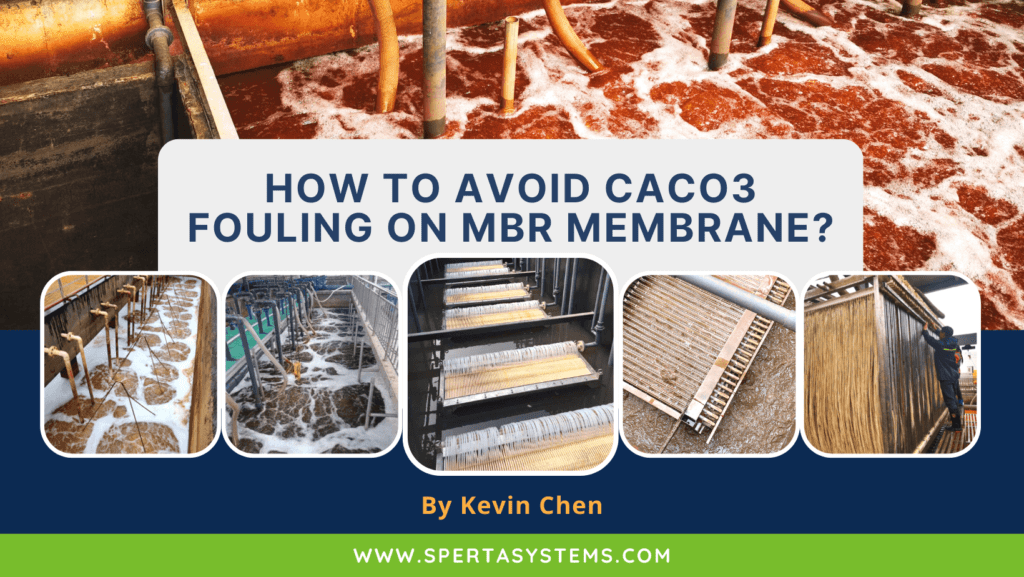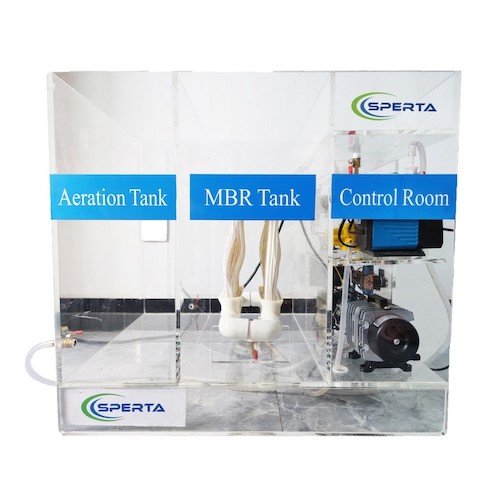Last Updated on August 7, 2022 by Kevin Chen
MBR (membrane bioreactor) technology is widely used in wastewater treatment. However, one of the major challenges during using MBR is the fouling of the membrane by calcium carbonate (CaCO3).
This article will explore how to avoid CaCO3 fouling on MBR membranes. We will discuss the causes of CaCO3 fouling and the steps we can take to prevent or reduce it.
What Caused CaCO3 fouling on the MBR membrane?
When the MBR membrane is in operation, if the feed water quality is complex, especially when the salt content of the feed water is relatively high, there is a possibility of Calcium Carbonate (CaCO3) fouling on the MBR membrane. If CaCO3 fouls the MBR membrane, it will block the fibers’ pore size and affect the MBR Module’s filtration result.
What Will Happen if CaCO3 Fouling on the MBR Membrane?
- CaCO3 will produce crystals on the surface of MBR membrane fibers. These crystals will damage the membrane, block its pore size or destroy the structure of the MBR membrane elements.
- Since CaCO3 is a calcium salt, it will increase the salt content of the feed water, reduce the desalination rate of the MBR membrane, increase the turbidity of the produced water and affect the PH value of the produced water.
- It will also decrease the water permeability of the MBR membrane module, and the large crystals may also break the membrane fibers.
- Excessive CaCO3 fouling will reduce the MBR membrane flux and increase the difficulty of chemical cleaning of the MBR membrane. This makes the MBR membrane module unable to operate properly.

How to Prevent CaCO3 Fouling on the MBR Membrane?
If the brackish water content in the feed water is relatively high, the salt content of the feed water needs to be controlled. Generally speaking, for the brackish water with the salt content TDS≤10,000mg/L, in the formula LSIC=pHC-pHS, when LSIC ≥ 0, CaCO3 fouling will occur.
In this case, we can use the lime or lime-soda ash softening method to remove the calcium hardness and alkalinity in the influent of the mbr membrane until the S&DSIC value meets the requirements of any of the above conditions.
For the seawater desalination system, sulfuric acid can also be added, and the amount of addition is added according to the actual water quality as appropriate, to make the influent water reaches pH 7 and the concentrated water S&DSIC is in a negative state.
How to remove CaCO3 Fouling on the MBR Membrane?
- Add scale inhibitor to the MBR membrane feed water to remove CaCO3 and prevent it from entering the MBR membrane module and pooling together to produce scaling.
- Add acid is also an effective treatment method, using food-grade acid, preferably sulfuric acid. It should be noted that if only adding acid is used to control CaCO3 fouling, the LSI or S&DSI index in the concentrated water must be a negative number.
- If the conditions that can control CaCO3 fouling are: LSIC value < 0, there is no need to add the scale inhibitor.
- If LSIC value ≤ 1.8 ~ 2.0, need to add scale inhibitor separately.
- If LSIC > 1.8 ~ 2.0, need to add acid until the LSIC reaches 1.8~2.0, then add scale inhibitor.
The above is the information about the cause of Calcium Carbonate (CaCO3) fouling the MBR membrane & how we can avoid this situation. If you still have related questions about the membrane bioreactor, please feel free to contact SPERTA.
Shanghai SPERTA Environmental Technology Co., Ltd. has specialized in producing water treatment products for many years. The company has its own MBR membrane technology, a complete technical team, and pre-sales and after-sales service. If you have any needs, please feel free to contact us.












